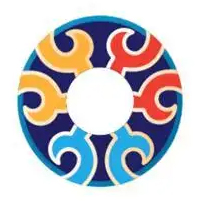Ten years of heavy gifts: Exploring the ancient palace art treasure - Cloisonne.
Among emperors in history, palace art has always been a symbol of royal nobility and luxury. Among them, Cloisonne, as a royal treasure and plaything, has dominated the palace for 600 years.
Cloisonne: An Exotic Name
According to historical records, in the second half of the 13th century, when the Mongolian army expeditioned to Western Asia, they captured a large number of skilled craftsmen and brought them to China as slaves. These craftsmen brought with them the popular metal-base cloisonne production technology and raw materials from the Arab region to China.
In the profound art soil of the Chinese nation, Cloisonne quickly integrated the traditional style of the Chinese nation and became a brilliant pearl in the history of Chinese arts and crafts.
The status of Cloisonne in the palace during the Ming and Qing dynasties
Emperor Jingtai of the Ming Dynasty loved Cloisonne products and even set up a workshop for production inside the Forbidden City. In the Ming and Qing dynasties, Cloisonne became the most mysterious art treasure in the royal treasure house.
During the Kangxi period, the imperial court set up Cloisonne to produce metal-based painted cloisonne. Thereafter, the Qianlong period produced a large number of various crafts and intricate cloisonneware.
The craftsmanship and characteristics of Cloisonne
During the Qianlong period, cloisonné enamel mainly used a copper base, and some of them used real gold and silver as the base. The enamel glaze is mostly made from imported natural minerals and semi-precious stones.
The reason why cloisonné enamel became a luxurious art exclusively enjoyed by the imperial court over the centuries is twofold. On the one hand, it is because of its high value, and on the other hand, it has an inherent aura of richness and nobility, which has been regarded as a unique symbol of imperial power and wealth by emperors throughout history.
The special status of cloisonné enamel and its tribute works
The production of cloisonné enamel has been monopolized by the imperial court from the Yuan Dynasty to the end of the Qing Dynasty, and the number of collections worldwide is limited. In 2023, on the occasion of the 10th anniversary of the "Belt and Road" initiative and the concept of a "community with a shared future for mankind," the Beijing Cloisonné Factory organized a team of masters to create the cloisonné enamel artwork "Everlasting Lotus • Chinese Happiness." This work was jointly completed by Chinese arts and crafts masters Zhong Liansheng, Zhang Tiecheng, Yuan Changjun, and national gift designer Wang Jiafei, expressing tribute to these two important concepts through traditional Chinese art.

